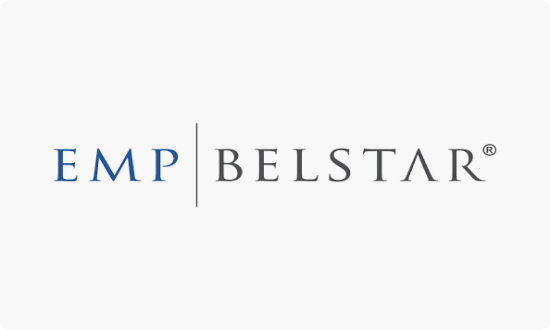- Home
- Industries
- Logistics
Logistics

Korea’s Logistics Industry
Trends and Outlook
Logistics Companies Continue Growing Backed by the Recovery of Busan and Incheon’s Port Traffic
Logistics Centers Developingin Two Directions
With the increase of transportation volume and the introduction of low-volume and multi-product processing facilities, shippers are becoming larger, more advanced, and concentrated through M&A.
Incheon Airport and
Busan Port Serve as Mega Hubs
-
Steady Growth in Logistics
InfrastructureSurrounded by sea on three sides and located between China and Japan, Korea has an export-oriented economy which helped the development of international logistics industry centered the capital region (Incheon Port and Incheon Airport) and the Busan region (Busan Port). The logistics belt connecting Seoul and Busan is filled with logistics infrastructure encompassing transportation networks, airports, ports, and inland logistics bases.
-
Industrial Clusters
Korea's logistics system has seven inland logistics bases and multi-purpose logistics terminals in five regions (Seoul, Busan, central region, Honam, and Yeongnam). A total of thirty industrial complexes specializing in logistics (total area of 12 million m2) are operating nationwide. Logistics companies are mostly operating in free economic zones and free trade zones that provide benefits such as tariff suspension, tax reduction, and infrastructure provision.

Namhoon Ghang
Service Industry Promotion TeamInvestment Success Stories

UPS

UPS, the largest express air cargo company in the United States, first entered the Korean market in 1988 and officially launched as 'United Parcel Service Korea' in 2008. The company operates a logistics center at the Incheon International Airport Free Trade Zone Cargo Terminal. As the strategic value of Incheon International Airport increases and cargo volumes rise, UPS has recently decided to build a state-of-the-art logistics system within the center. The cost of the system installation is estimated at approximately USD 26 million, with completion targeted for the first half of 2025.

EMP Belstar / US

EMP Belstar is a global investor that has established cold chain clusters in major logistics hubs across Korea, including Busan, Incheon, and Pyeongtaek Ports. As its first project in Korea, EMP Bestar has built an ultra-low temperature logistics complex facility in Oseong Industrial Complex in Pyeongtaek, completed and launched in January 2019. It is also building ultra-low temperature facilities in Busan and Incheon, with a vision to establish its Asian cold chain hub in Korea. The total amount of executed and planned investment in Korea reached USD 2-3 billion, and EMP Belstar aimed to increase its market share to 25% by building five to six cold storage facilities nationwide, starting from investing in major logistics clusters.
Recommendation on Locations

Industrial Complex Information
Busan New Port Backward International Industrial Logistic City (Stage 1) General Industrial Complex (Busan Jinhae Free Economic Zone)
| Initial designation date | 2010.03.03 |
|---|---|
| Designated area(m2) | 5,707,591 |
| Management | Busan-Jinhae Free Economic Zone Authority |
| Nearby Railway | Busan Station |
| Distance from station(km) | 26 |
| Nearby Airport | Gimhae International Airport |
| Distance from airport(km) | 19 |
| Industrial waterSupply capacity(ton/day) | 20479(㎥/day) |
| Affiliation local government | Busan Metropolitan City Gangseo-gu |
| Population | 3,401,078 |

Industrial Complex Information
Korea Export (Bupyeong District)
| Initial designation date | 1965.06.16 |
|---|---|
| Designated area(m2) | 609,361 |
| Management | Korea Industrial Complex Corporation |
| Nearby Railway | Bupyeong Station |
| Distance from station(km) | 5 |
| Nearby Airport | Gimpo International Airport |
| Distance from airport(km) | 14 |
| Industrial water Supply capacity(ton/day) | 384000(㎥/day) |
| Affiliation local government | Incheon Metropolitan City Bupyeong-gu |
| Population | 2,943,491 |

Industrial Complex Information
Korea Export(Juan District)
| Initial designation date | 1969.08.05 |
|---|---|
| Designated area(m2) | 1,176,829 |
| Management | Korea Industrial Complex Corporation |
| Nearby Railway | Bupyeong Station |
| Distance from station(km) | 7 |
| Nearby Airport | Gimpo International Airport |
| Distance from airport(km) | 25 |
| Industrial water Supply capacity(ton/day) | 250000(㎥/day) |
| Affiliation local government | Incheon Metropolitan City Seo-gu, Nam-gu, Bupyeong-gu |
| Population | 2,943,491 |

Industrial Complex Information
Oseon Industrial Complex
| Initial designation date | 2014.04.11 |
|---|---|
| Designated area(m2) | 459,481 |
| Management | Chungcheongbuk-do Eumseong County |
| Nearby Railway | Eumseong Station |
| Distance from station(km) | 19 |
| Nearby Airport | Cheongju International Airport |
| Distance from airport(km) | 43 |
| Industrial water Supply capacity(ton/day) | 871(㎥/day) |
| Affiliation local government | Chungcheongbuk-do Eumseong County |
| Population | 94,179 |

Industrial Complex Information
Uiwang Techno Park
| Initial designation date | 2016.12.28 |
|---|---|
| Designated area(m2) | 158,708 |
| Management | Gyeonggi-do Uiwang City |
| Nearby Railway | Suwon Station |
| Distance from station(km) | 10 |
| Nearby Airport | Gimpo International Airport |
| Distance from airport(km) | 39 |
| Industrial water Supply capacity(ton/day) | 754(㎥/day) |
| Affiliation local government | Gyeonggi-do Uiwang City |
| Population | 162,751 |

Industrial Complex Information
Bukpyeong 2nd General Industrial Complex
| Initial designation date | 2013.10.14 |
|---|---|
| Designated area(m2) | 598,964 |
| Management | Gangwon-do Donghae City |
| Nearby Railway | Chuam Station |
| Distance from station(km) | 1 |
| Nearby Airport | Yangyang International Airport |
| Distance from airport(km) | 93 |
| Industrial water Supply capacity(ton/day) | 2,153(㎥/day) |
| Affiliation local government | 2,153 |
| Population | 90,548 |











 +82-2-3460-3285
+82-2-3460-3285
 damon_ghang@kotra.or.kr
damon_ghang@kotra.or.kr